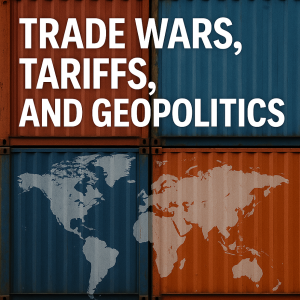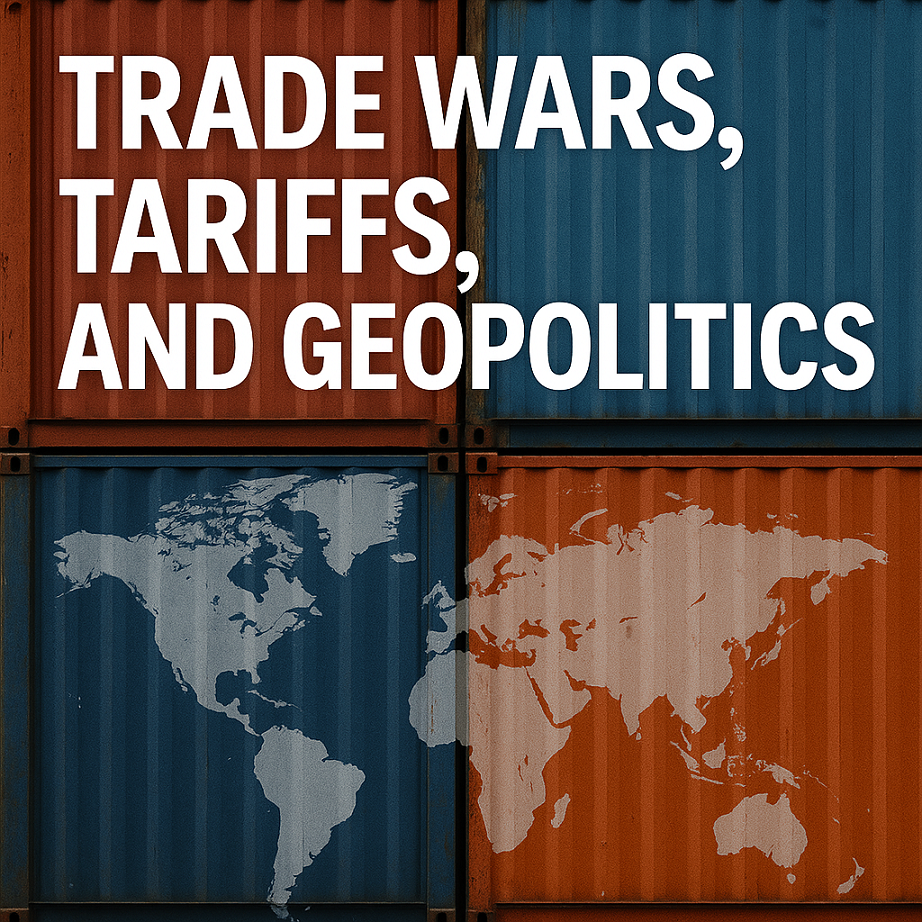
Discover how trade wars, tariffs, and geopolitical policy reshape global shipping and supply chains. Learn about risks, strategies, and future trends in this comprehensive maritime guide.
When Policy Rocks the Boat 🚢
In 2018, when the United States and China escalated a tariff war, container volumes shifted almost overnight. American importers rushed to bring goods in before tariffs hit, clogging ports in Los Angeles and Long Beach. Meanwhile, Chinese exporters scrambled to reroute through Southeast Asia. Freight rates spiked, warehouses filled to bursting, and shipping companies faced the whiplash of demand surges followed by sudden lulls.
This was not an isolated event. From Brexit’s customs changes, to sanctions on Russia, to climate-related trade policies in the EU, political and regulatory decisions increasingly dictate how—and where—ships move. Maritime supply chains are no longer just about efficiency. They are about navigating the turbulence of global policy.
In this article, we’ll explore the role of trade wars, tariffs, and geopolitical regulation in shaping maritime supply chains. We’ll look at why this matters, how companies adapt, what case studies reveal, and what the future might hold.
Why trade and tariff policies matter in maritime supply chains
Shipping carries 80–90% of world trade by volume. That means even a small change in trade policy reverberates globally.
Tariffs: The hidden surcharge on logistics
Tariffs are essentially taxes on imported goods. When tariffs rise:
-
Importers often accelerate shipments before new duties take effect, causing temporary surges.
-
Exporters may reroute cargo to avoid affected markets.
-
Logistics providers must navigate new customs documentation, raising compliance costs.
For example, the U.S.–China trade war triggered a 25% tariff on many goods. Importers shifted sourcing to Vietnam, Malaysia, and Mexico, which altered shipping routes, port calls, and carrier strategies.
Sanctions and embargoes
Sanctions limit who can trade with whom. In maritime transport, sanctions can:
-
Create “dark fleets” of tankers operating outside mainstream insurance and tracking systems.
-
Force cargo rerouting, lengthening voyages and raising fuel costs.
-
Increase compliance burdens, as shipping firms must vet every transaction for legal exposure.
Regulatory shifts: Beyond tariffs
-
Brexit required new customs procedures between the UK and EU, slowing trade and increasing costs.
-
The EU’s Carbon Border Adjustment Mechanism (CBAM) is effectively a climate tariff, targeting imports of carbon-intensive goods.
-
Regional trade agreements, like RCEP in Asia, lower tariffs but also require detailed rules-of-origin checks.
The bottom line: Policy decisions can reshape global trade flows, carrier networks, and port strategies within months—or even days.
How geopolitical risks influence maritime decisions
Route selection and chokepoints
Trade policy and geopolitical instability often overlap with geography. The Suez Canal blockage in 2021 highlighted how a single chokepoint could freeze global trade. But political decisions can have similar effects:
-
Tensions in the South China Sea raise insurance premiums and security costs.
-
Sanctions on Russia shift flows of oil and gas away from the Baltic and Black Sea to Asia.
-
Piracy in the Gulf of Guinea forces rerouting or higher security spending.
Port selection
A shipper may bypass ports in countries with restrictive tariffs, favoring neutral hubs. For instance, when sanctions limited direct trade with Iran, Dubai’s Jebel Ali strengthened its role as a regional transshipment hub.
Fleet deployment and alliances
Geopolitical shocks often force carriers to redeploy vessels to new lanes. This can disrupt alliances and service reliability, impacting supply chain predictability.
Technologies and tools for navigating policy-driven disruption
Digital twins and scenario planning
A digital twin of a supply chain allows companies to simulate what happens if tariffs rise on a route, or if sanctions close a corridor. They can test rerouting options, forecast costs, and estimate carbon impacts.
Trade compliance platforms
Specialized systems track tariff codes, sanctions lists, and rules-of-origin. These tools reduce the risk of fines while enabling companies to calculate true landed cost.
Real-time visibility
AIS tracking, IoT sensors, and integrated dashboards help companies see exactly where their goods are, ensuring they can reroute quickly in response to regulatory changes.
Collaboration platforms
Industry initiatives, such as the IMO’s Maritime Single Window, improve transparency in documentation—crucial when customs and tariff requirements shift suddenly.
Challenges and solutions
Challenge: Rising compliance costs
Adapting to new tariff regimes or sanctions often requires specialized teams. For smaller firms, this can be overwhelming.
Solution: Outsource compliance to freight forwarders or adopt automated compliance tools.
Challenge: Trade diversion and inefficiency
Tariffs may push shippers into longer, less efficient routes.
Solution: Use supply chain network optimization to balance cost, risk, and carbon impact.
Challenge: Policy uncertainty
Changes are often announced with little warning.
Solution: Maintain flexible contracts, diversify suppliers, and use predictive analytics to model “what if” scenarios.
Challenge: Uneven global standards
Different regions apply different rules, from emissions targets to customs codes.
Solution: Engage with industry bodies like BIMCO, ICS, and IMO to stay ahead of evolving global frameworks.
Case studies: Trade policy in action 🌍
U.S.–China trade war (2018–2020)
-
Triggered rerouting of manufacturing to Southeast Asia.
-
Caused congestion at U.S. West Coast ports as importers rushed shipments.
-
Increased freight rate volatility by more than 25%.
Russia–Ukraine conflict (2022–present)
-
Closed major Black Sea grain corridors.
-
Sparked the UN-led Black Sea Grain Initiative.
-
Forced tanker traffic to reroute, lengthening voyages and reshaping energy flows.
Brexit (2020)
-
Introduced customs paperwork between the UK and EU.
-
Slowed ferry and RoRo traffic across the English Channel.
-
Boosted Irish ports like Dublin and Cork, which expanded direct links to continental Europe.
EU climate tariffs (2023 onward)
-
The Carbon Border Adjustment Mechanism (CBAM) began its transition phase.
-
Importers must now report carbon content for steel, cement, and fertilizers.
-
Maritime supply chains increasingly integrate carbon accounting into landed cost calculations.
Future outlook: What lies ahead for maritime supply chains
-
More fragmentation of trade. As countries prioritize resilience over efficiency, supply chains may regionalize, reducing reliance on single corridors.
-
Green trade policies. Climate tariffs, emissions trading, and fuel regulations will become key drivers of routing and cost.
-
Digital diplomacy. Expect greater reliance on data-sharing platforms to comply with trade rules while improving transparency.
-
Resilient sourcing. Companies will diversify suppliers to hedge against policy swings, leading to more complex, multi-route supply chains.
-
Consumer pressure. Shoppers increasingly demand transparency not only in sustainability but also in ethical sourcing, making compliance with trade and tariff rules part of corporate reputation management.
Frequently asked questions
1. How do tariffs affect shipping costs?
Tariffs increase the landed cost of goods, which often reduces demand for shipping on affected routes. But in the short term, they can trigger surges as importers rush cargo before tariffs take effect.
2. Can digital tools predict tariff impacts?
Yes. Digital twins and predictive analytics allow companies to model tariff scenarios, forecast costs, and plan alternative routes.
3. Do sanctions only affect shipping companies trading directly with targeted nations?
No. Sanctions ripple through insurance markets, port access, and even banking transactions, meaning many indirect players are also affected.
4. Will climate tariffs really change maritime trade flows?
Yes. As the EU and other regions implement carbon border measures, shippers will factor carbon intensity into sourcing and routing decisions.
5. How can small logistics firms handle compliance costs?
By using digital compliance tools or partnering with global forwarders who already have the infrastructure to manage complex regulations.
6. Which regions are most vulnerable to policy-driven disruption?
Chokepoints such as the South China Sea, Suez Canal, and Black Sea, as well as regions heavily dependent on single export commodities.
Conclusion: Steering through a policy-driven era
Maritime supply chains have always been shaped by winds and tides. But today, the strongest currents often come from parliaments, ministries, and international negotiations. Tariffs, sanctions, and trade policies are no longer background noise—they are frontline risks and opportunities.
For shipping companies, ports, and supply chain managers, the challenge is to stay agile: to monitor policies, run scenarios, and prepare for sudden shifts. For students and future professionals, understanding the intersection of politics and logistics is as critical as knowing navigation or engineering.
The future of shipping will not be decided only by technology or trade volumes—but also by the policies that frame who trades with whom, and on what terms.
References
-
UNCTAD. (2023). Review of Maritime Transport 2023. https://unctad.org/publication/review-maritime-transport-2023
-
International Chamber of Shipping (ICS). (2022). Supply Chain Resilience Report. https://www.ics-shipping.org/
-
International Maritime Organization (IMO). (2024). Maritime Single Window Guidance. https://www.imo.org/
-
European Commission. (2023). Carbon Border Adjustment Mechanism (CBAM). https://taxation-customs.ec.europa.eu/
-
Lloyd’s List Intelligence. (2021). Impact of U.S.–China Trade War on Shipping. https://lloydslist.maritimeintelligence.informa.com/
-
World Bank. (2022). Trade and Logistics in a Time of Crisis. https://www.worldbank.org/
-
BIMCO. (2024). Geopolitics and Shipping Market Analysis. https://www.bimco.org/


thank youuuuuuuu